
The stream of mountain bike gadgets we learn about and test is rich with good ideas, and often includes well-executed gear. Occasionally we collect a handful of intriguing bits that don’t quite warrant a full review on their own, which is why we decided to gather and share them here.
First up is a set of chain dampers from STFU Bike, designed to quiet your drivetrain on rough terrain, followed by the well-loved Shorty X mud guard from Mud Hugger and a gel helmet pad from MET. Then we’ll dig into a vanity-photo tool with the All Mountain Style Kickstand, and finally the Peak Rider bike carrying system for folks who like to reach peaks that are too steep to pedal.
Chain Dampers from STFU Bike

The brilliance of a buzzing freehub can be as divisive a topic as flat pedals vs. clips, or metal vs. resin brake pads. However, when it comes to the cacophony of a chain slapping against the rear triangle, we all want it to STFU, ASAP. Whistler BC based brand STFU Bike has designed a system of chain dampers to do precisely that.
The soft rubber silencers can be adjusted to fit nearly any modern frame, be it full suspension or hardtail. Simply follow the install steps on the STFU website, and you should be quietly shredding in a matter of minutes. When properly adjusted the dampers don’t touch the chain in any gear, and instead only prevent it from slapping against your frame.

My personal frame has a tightly drawn set of tubes in the rear end, similar to a Pole Stamina. It’s so tight that the chain rubs on the inner seatstay ever so slightly when shifted into the lowest gear. I wasn’t able to fit the STFU “trail/XC/enduro” dampers without considerable rubbing in the smallest and largest cogs, so I opted for the DH bike setup like the folks at Pole Bicycles use. So far so quiet. While the chain can still contact my frame occasionally, the overall noise factory has been significantly muted. I’ll be mounting a set on my next steel hardtail build this spring for sure.
The larger trail bike dampers weigh roughly 75g uncut and retail for $34.95 at STFUbike.com.
Shorty X mud guard from Mud Hugger
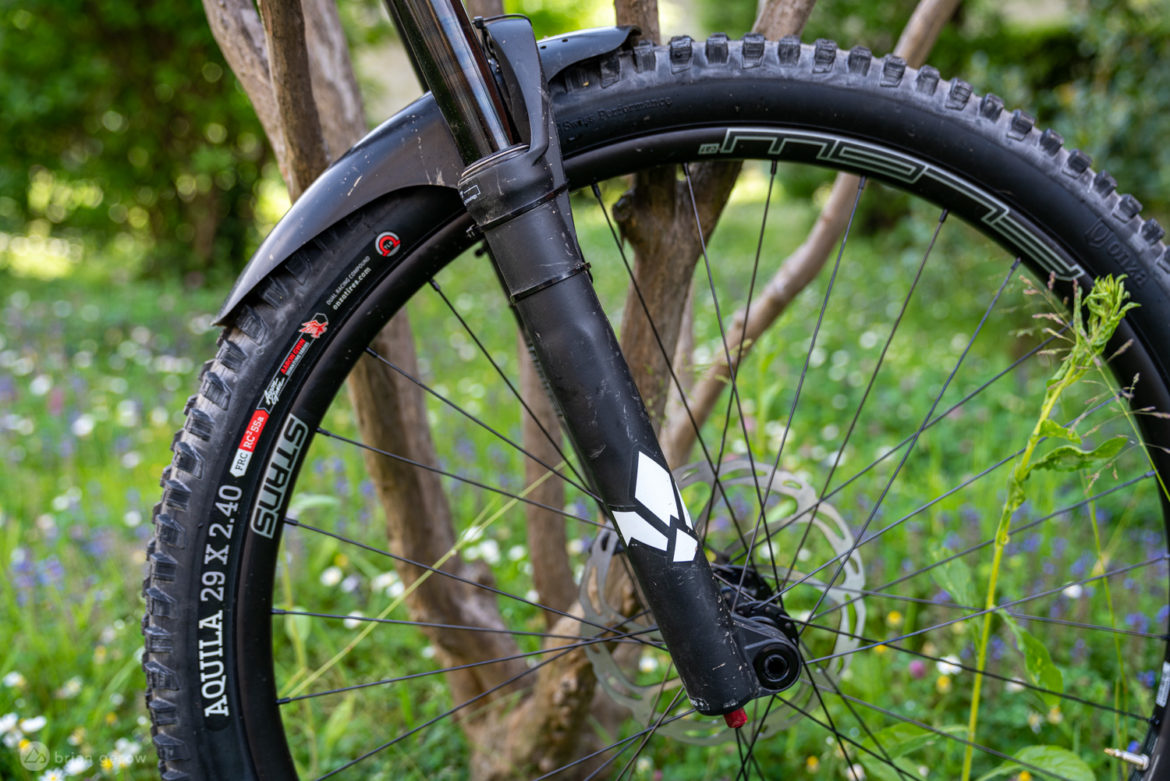
Mud Hugger is not a new nor a secret name in the mountain bike industry. Loïc Bruni and countless other World Cup DH riders have been using their face-savers for a while now, and I thought it was time to give one a go. I’ve long thought that all fenders did the job they were supposed to do with similar aplomb. I was wrong.
After using the traditional folded hunk of plastic to keep mud and rocks out of my eyes for years, the Shorty X mud guard is a celebration-worthy upgrade. Where the former fender kept my vision mud-free so long as the mud wasn’t too watery and I wasn’t leaning and turning at a particular angle, the Shorty X blocks the mucky stuff 100% of the time. I can even splash puddles intentionally without receiving a facial.
If I lived in a climate with more frequent rainfall I would likely install the longer FRX guard, and MAX front extender for optimum coverage. Since it’s more often dry and rocky where I live, I’ll keep the Shorty X onboard through the summer to deflect sticks and stones.
The Shorty X weighs approximately 60g, and costs £19.99.
Dual Gel Front Pad from MET Helmets

The Dual Gel Front Pad from MET helmets is on the simpler side of gadgets, and it works precisely as advertised. The gel pad fits in place of any foam front helmet pad, with a feeling similar to soft skin. The hypoallergenic strip is designed to make helmets more comfortable by providing a thicker and softer piece of material to sit against your skin. It also lasts longer than traditional padding, lifts the shell away to allow better air flow, and directs sweat away from the rider’s eyes.
My head sweats quite heavily, and this pad diverts most of the salty stuff away from my eyes rather than storing it up like ordinary foam padding. It also doesn’t retain grit from muddy rides and is super easy to rinse clean.

Head side 
Helmet side
Dual Gel pads will fit the front of most any helmet that has a similar brow pad, and retails for €9 on the MET webpage.
Kickstand from All Mountain Style

Now here’s a gadget no one needs that might make life easier for some folks. Maybe you have to park your bike inside a cramped apartment and don’t want to paint the walls with tire marks. Or you adhere to a rigid “no bike no like” policy on social media. Regardless of the justification, some folks want their bike to stand up on its own, without scouring the forest for the perfect length stick. Permanent kickstands on mountain bikes are dangerous for the same reason they are in motocross — unintentional impalement — but this detachable little number from All Mountain Style (AMS) foregoes those safety concerns.
The AMS Kickstand also doesn’t add weight to your bike, and it breaks down Lego-style into a package that will fit in any hip pack or jacket pocket.
The Kickstand from All Mountain Style weighs 85g and retails for $38 (€35) on their website and JensonUSA.
Hike-a-bike system from PeakRider

I didn’t fully understand hike-a-bike beyond the occasional river fording until I moved to Europe. Now it’s a regular part of trail adventures. If the aim is to get to the very tip and descend the steepest lines, carrying the bike is sometimes the only option. In addition to smearing cow crap and whatever else the downtube has collected across my shoulders, hiking with a bike is awkward and cumbersome. When the terrain becomes too steep or technical to push your bike, typically it’s also characterized by sharp cliffs and sharper rocks. Having one or both hands free to scramble upward can make things a lot safer.
The folks at PeakRider have devised a system to liberate your hands while you hike. It includes a pole that runs through the hydration hole in the top of a backpack and spreads the weight of the load across a wide paddle inside the base of the pack. Then, there is a hefty pocket that straps around the balance point of your downtube that’s used to hang the bike from the tip of the pole, protruding from your pack.
If you’re left thinking “how the hell do I get the tip of that pole into the little pocket while lifting my bike in the air?” you’re not alone. It isn’t easy. You’ll need to have someone guide the pole into the pocket for you, so hopefully, you have an adventure buddy or two. The first time you put your bike on your back it likely won’t be balanced correctly, and you will need to reposition the pocket. The shock mount on my bike interferes with the balance point, and I have only been successful at using the PeakRider with one free hand. That’s still far safer than keeping both hands on the bike, with nothing but my face to catch a fall.
PeakRider sorted out two other uses for their hike-a-bike pole. The first is an action camera mount, or selfie-stick. Cute. The second is a burly steel trail raking head called the Peak Shaper that bolts on in place of the aforementioned paddle. While the intention of the Peak Shaper is spot on, it’s practical application is sub-par. The tool is fairly sturdy, and feels like it will last through a solid season or two of carrying bikes and raking trails, but the handle is about half as long as it needs to be. Unless you are raking on a steep hillside, where the short handle can reach the earth above you, the length of the tool’s handle will leave you will a cranky spine in no time.
The full system, including the trail rake, weighs 552g and retails for €149. The PeakRider carrying system alone weighs 206g and costs €89.
We would like to thank each of these brands for providing gear for review.












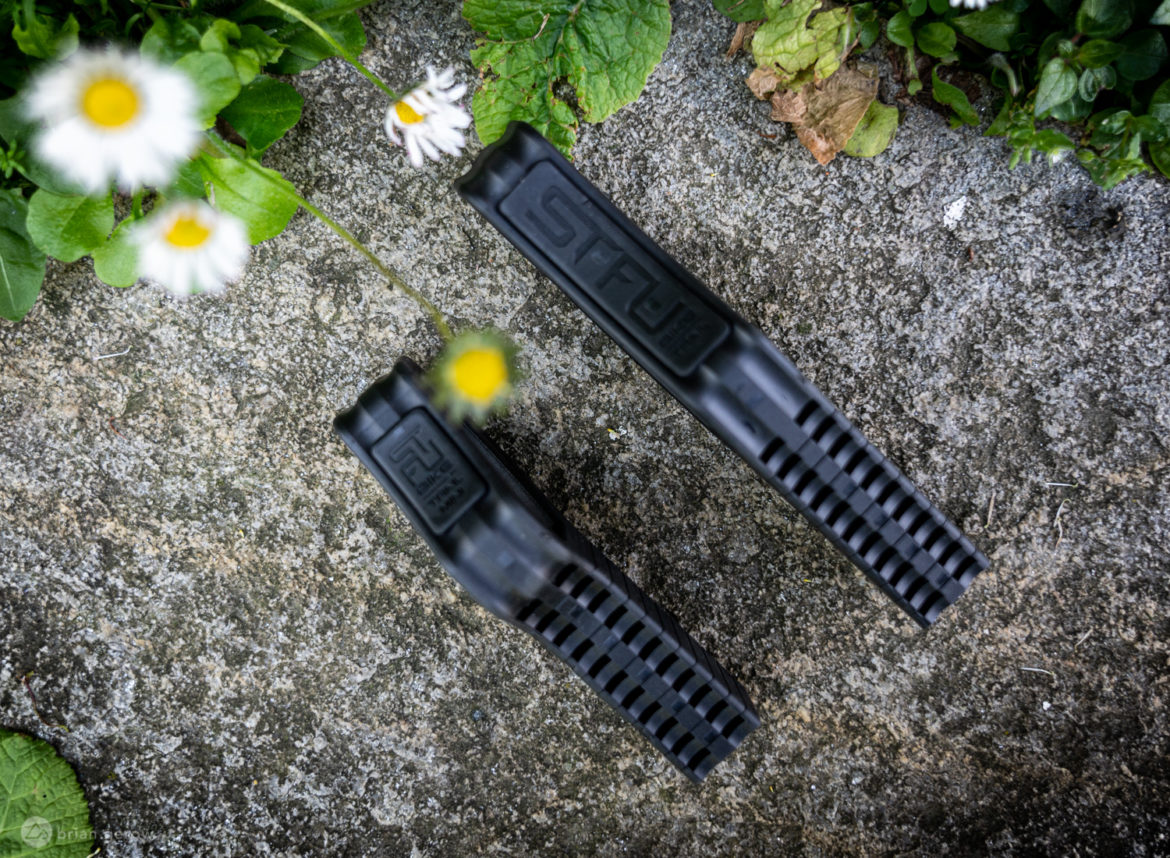
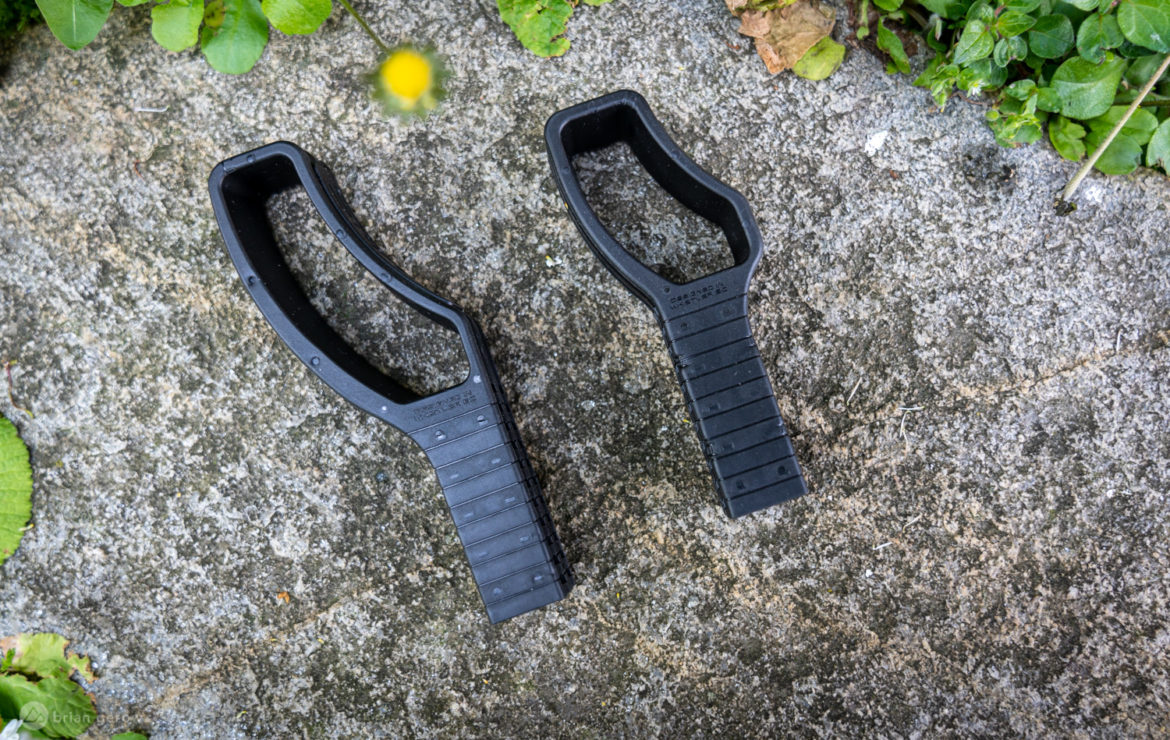
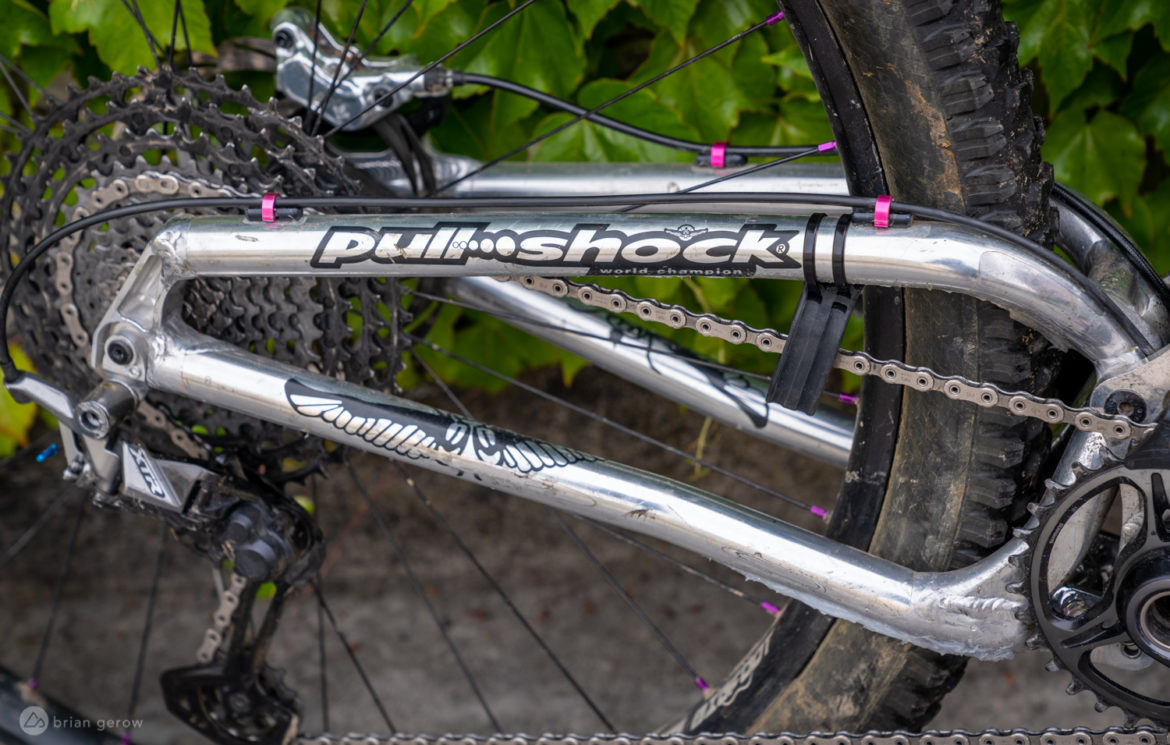

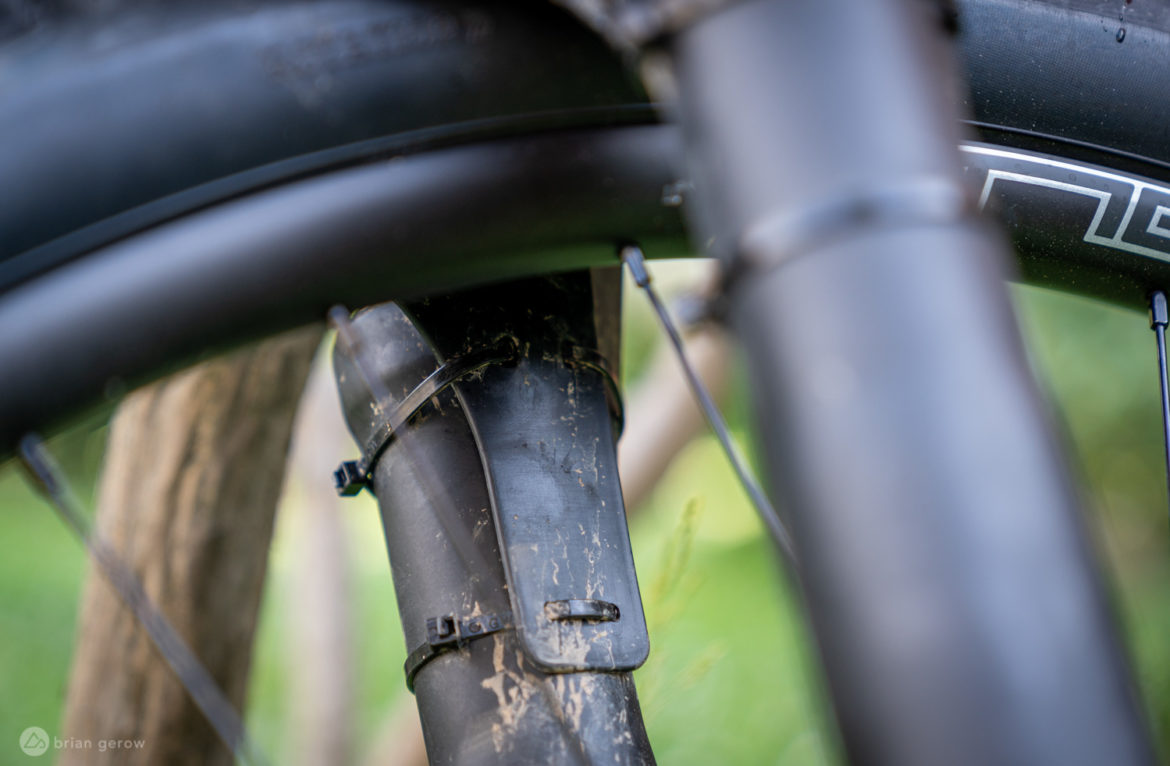



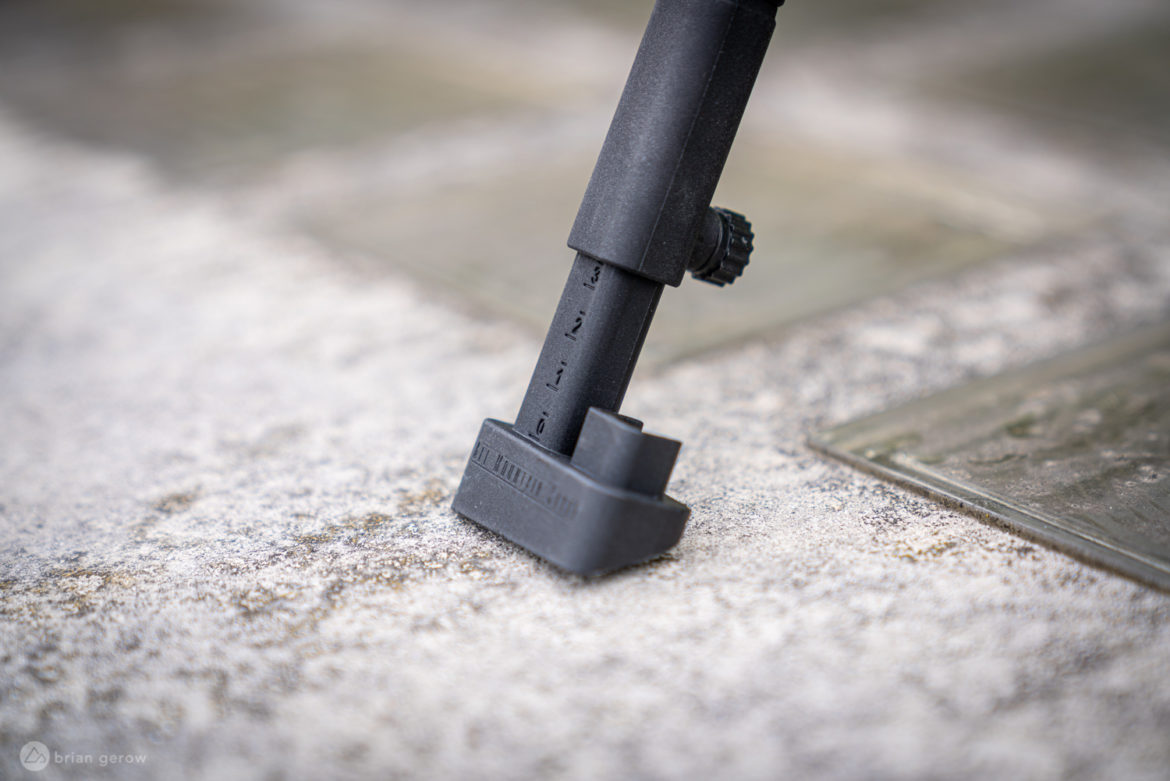
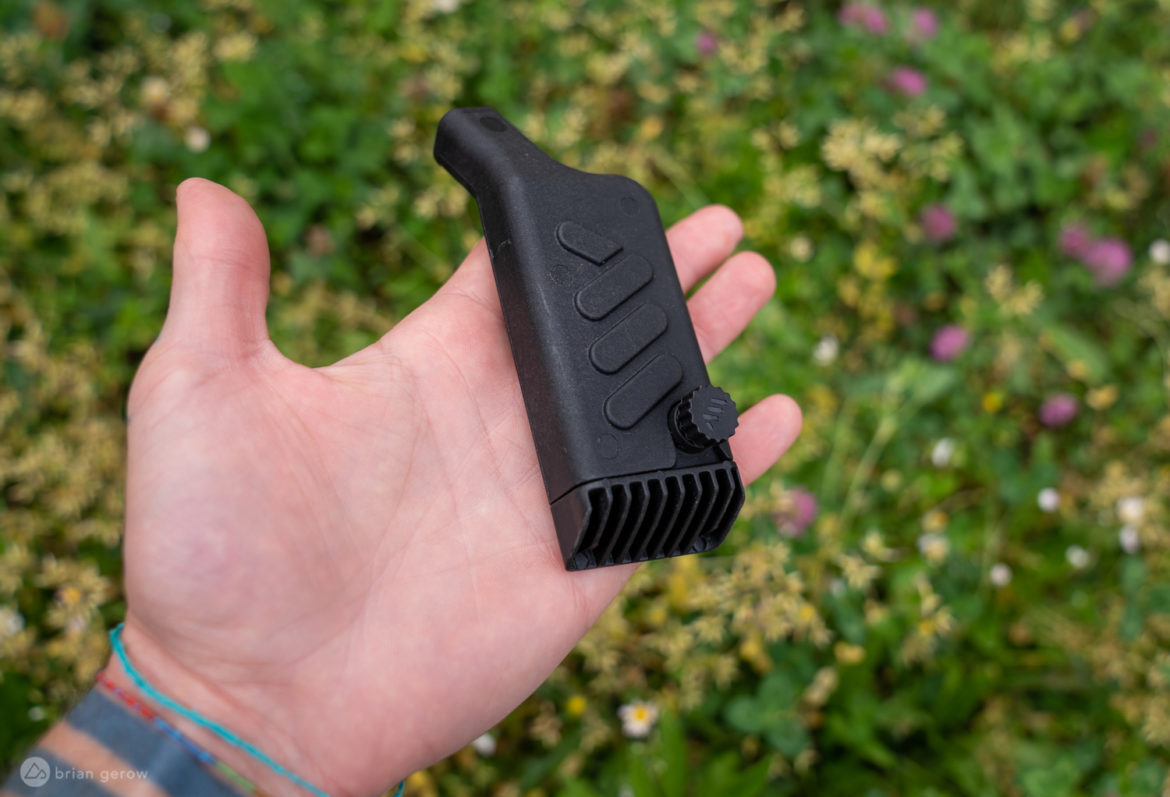


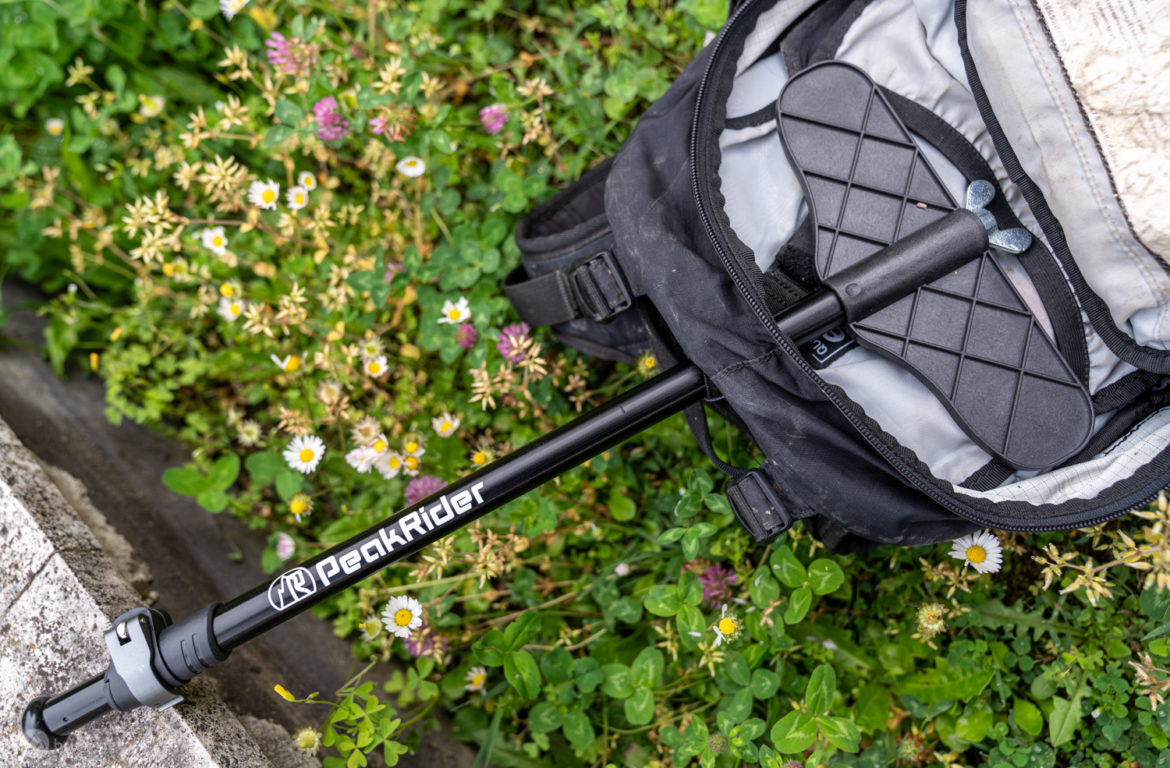
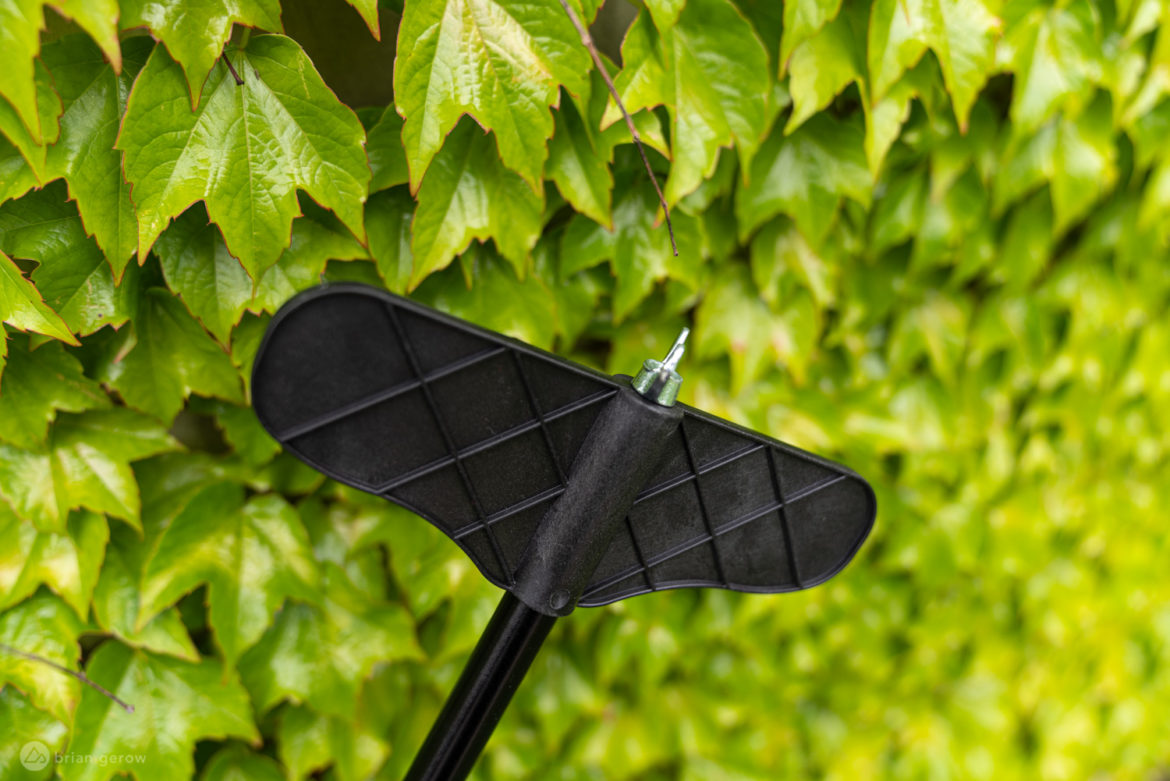


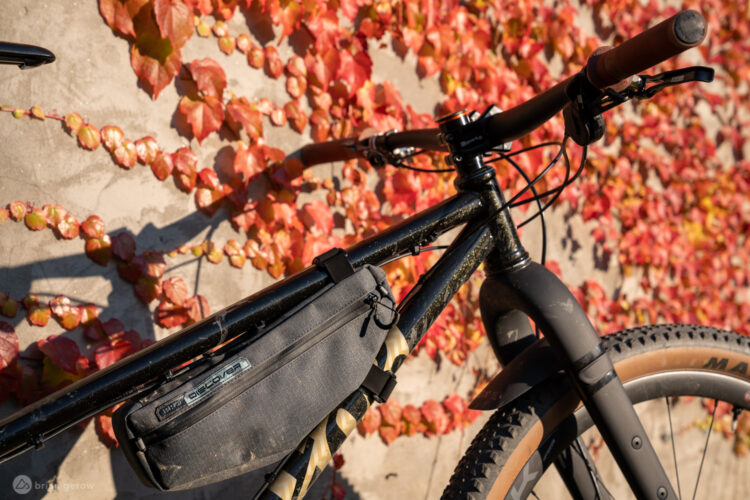







3 Comments
May 15, 2020
May 18, 2020
The folks at MET said they are currently working to increase availability in North America, so keep checking back. When I hear anything more from them I will add that info here.
-Gerow
May 20, 2020